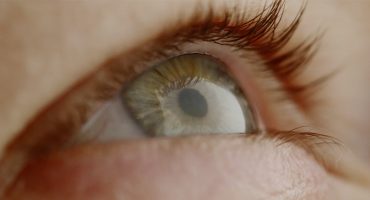“We can’t place the camera there. It will break the 180 degree rule.” You might have heard discussions like this on set when moving to the next shot. But what is the 180 degree rule? In short, it’s a guideline for camera placement that will help your audience maintain spatial orientation once your scene is edited.
It is a crucial tool in every filmmaker’s toolkit, and knowing how it works will help you understand how film language works in general. Essential to the craft of cinematography, it is one of the most important things to consider when breaking down your scenes and composing shots.
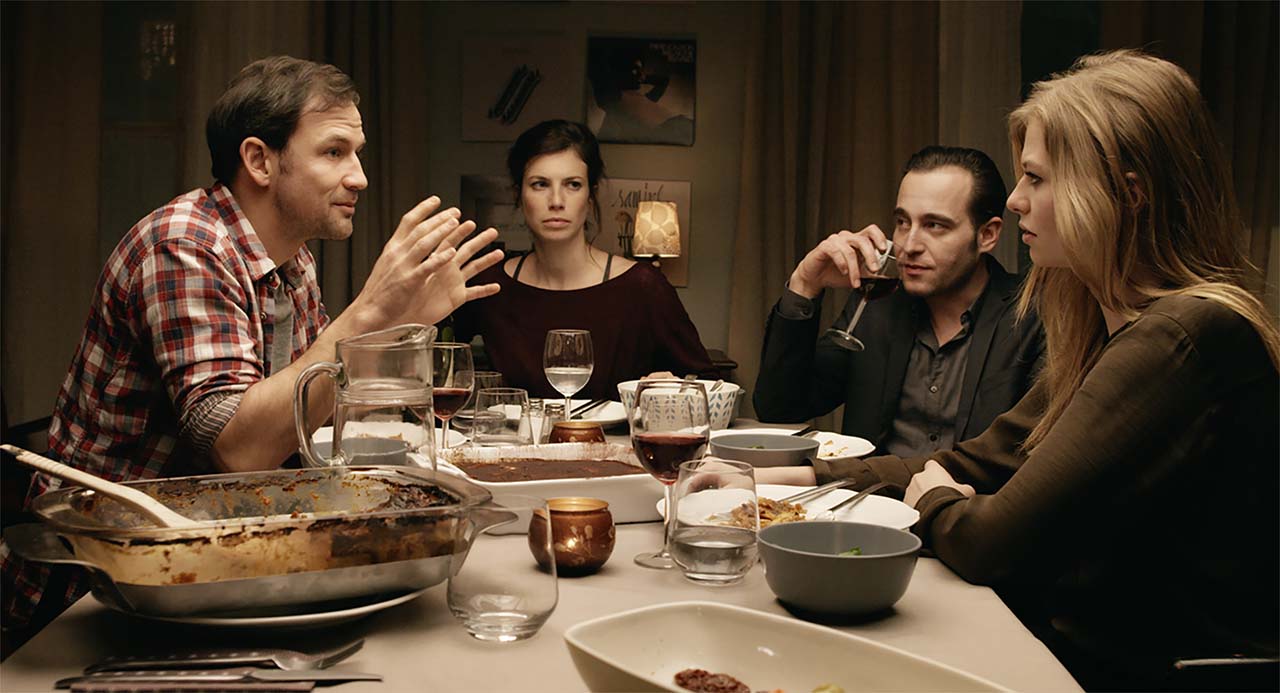
A scene at a table with multiple characters
The 180 degree rule is one of those filmmaking guidelines that are easy to follow when shooting a simple scene, but can get confusing the more complex your scene becomes. In this article, we first review the basics of the 180 degree rule and then dive deeper so that you can handle tricky situations confidently.
Table of Contents
Why is the 180 degree rule important?
In film, our three-dimensional world must be translated into two-dimensional imagery. Good cinematography and editing will make these “flat” images come alive by allowing viewers to create a mental image of the space presented to them. The goal is to help the audience get a sense of the three-dimensional space and, thus, better understand the scene taking place in it. One of the most common approaches to achieving this is adhering to the 180 degree rule.
As with almost every rule in filmmaking, you can find appropriate reasons to break the 180 degree rule. We will take a look at this later in the article.
How it works
The classic example representing the importance of the 180 degree rule is a dialogue scene between two or more people that you can find in almost every film. It is very common practice to shoot this in a shot / reverse shot scheme. That means instead of always showing all characters at the same time, only one is shown at a time and the interaction between the characters is created through editing.
When the characters look at the respectively opposite side of the frame, their eyelines are matched and the audience gets the impression that the characters are looking at each other. This way, the filmmakers can emphasize certain parts of the dialogue by deciding on the moments during which to show each character.
If the 180 degree rule is discarded, the individual shots might not fit together properly once they are edited, as the characters will appear to not be facing each other. This might confuse the audience and can cause them to lose track of the narrative.
Two people interacting
Imagine a scene in which two people are facing each other.
The best way to maintain the 180 degree rule within this scene is to draw an imaginary line between the two people. Whenever the camera position changes, the camera must be kept on the same side of that line. This way, once the scene is edited, one person will appear to look to the right side of the frame and the other person will appear to look to the left side of the frame. Thereby, the two people seem to be looking at each other and the spatial orientation is maintained.

Using the 180 degree rule makes the characters appear to look at each other
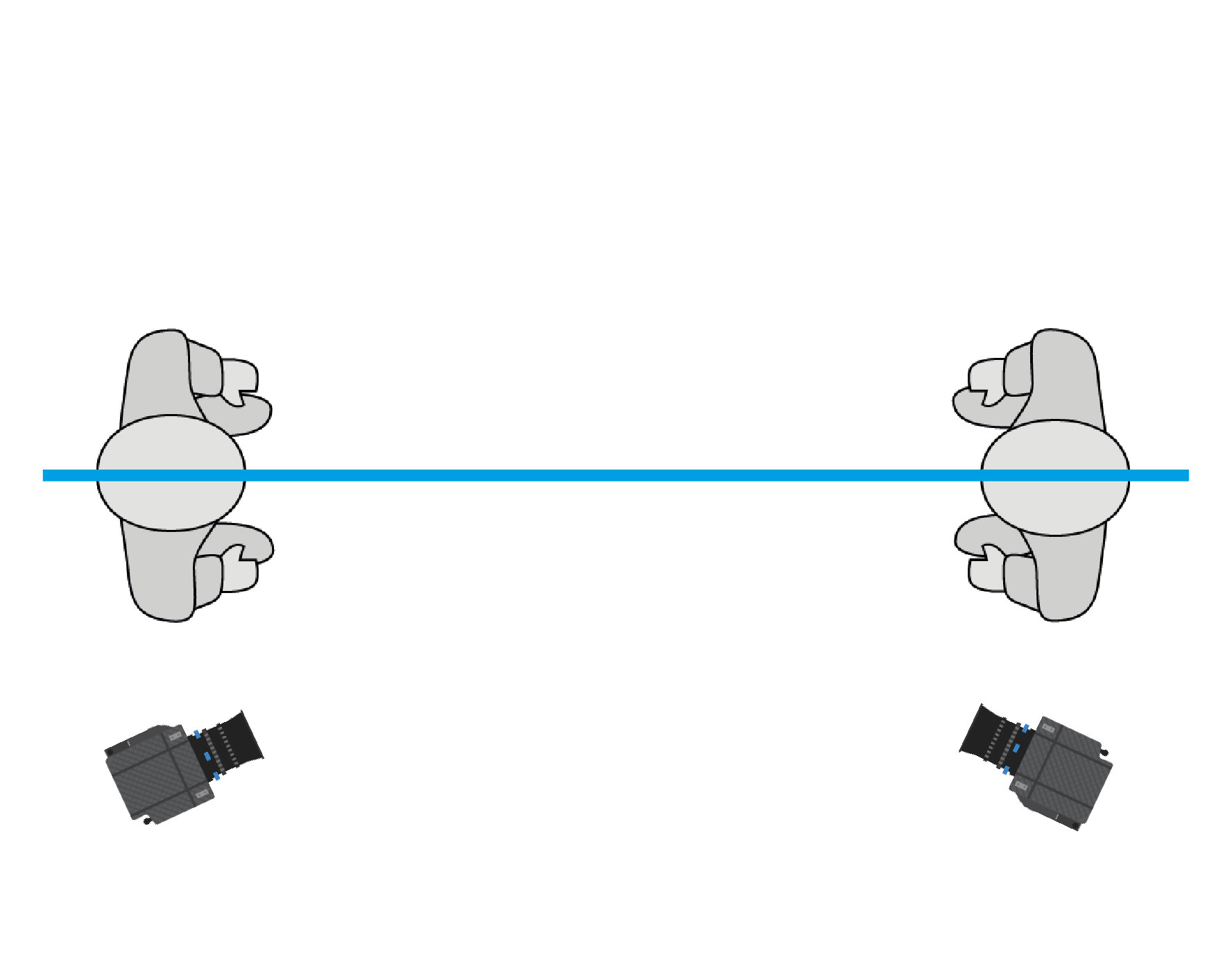
If the camera crosses the line for one of the shots, both characters will look to the same side of the frame and the audience will get the impression that they are not looking at each other but, instead, in the same direction.

The 180 degree rule is broken and the characters seem to look in the same direction instead at each other
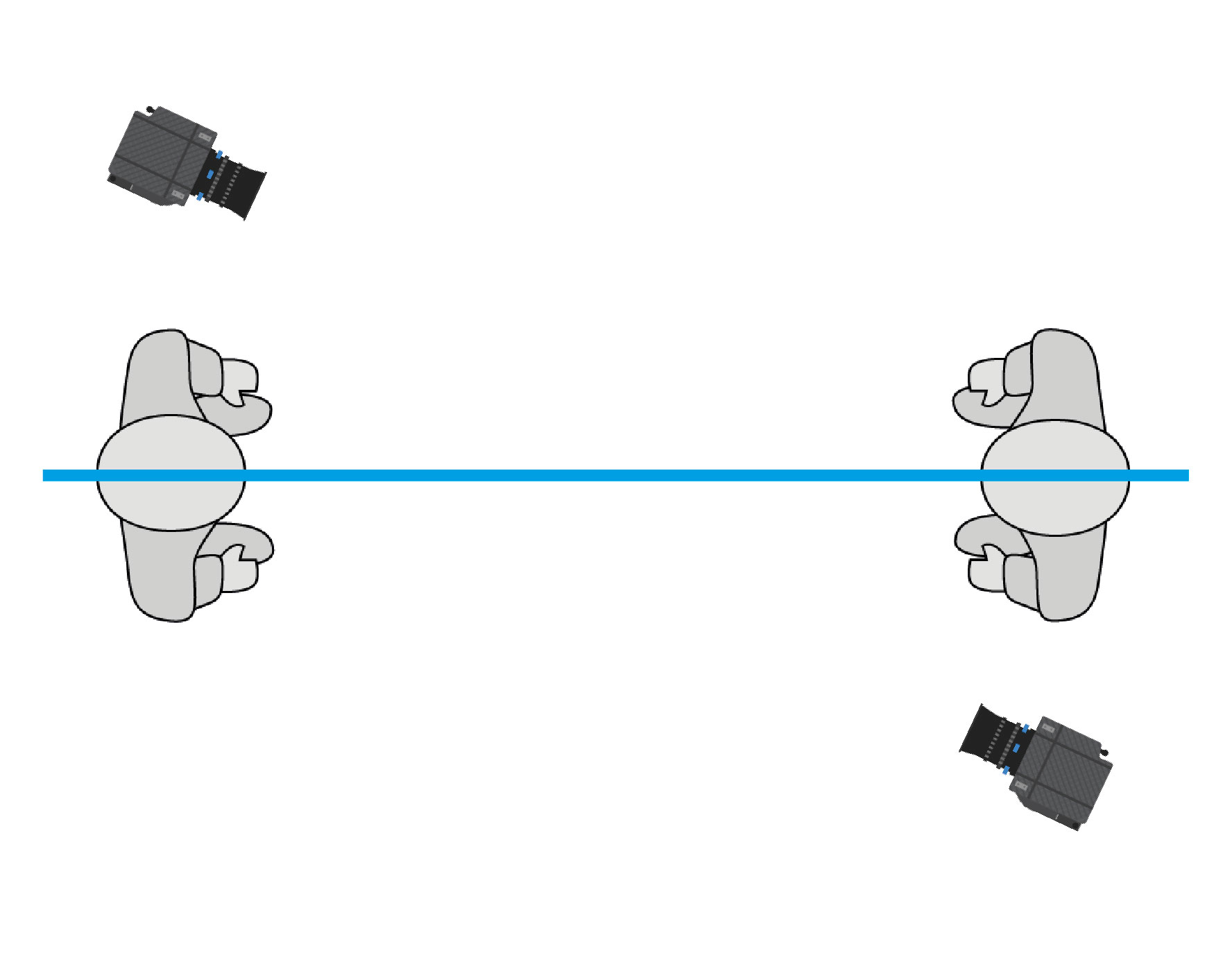
Even if the two characters in a scene are not looking at each other (for example, if one person is turning their back on the other person), the camera must be kept on the same side of the line to maintain the spatial orientation for the audience.
Three or more people interacting
It gets a little more complex if you are shooting a scene in which three or more people are interacting. Every new interaction creates a new situation in which the 180 degree rule has to be respected. The greater the number of people in a scene at the same time, the more lines are created between the individuals. Therefore, you must consider editing very accurately while shooting. The line that exists in the moment you want to cut later defines your next camera position for shooting the scene. Let’s take a look at an example in which four people are sitting at a table, having a conversation:

In this example, the first shot of the scene is a wide shot, showing the room, the table, and all four people.

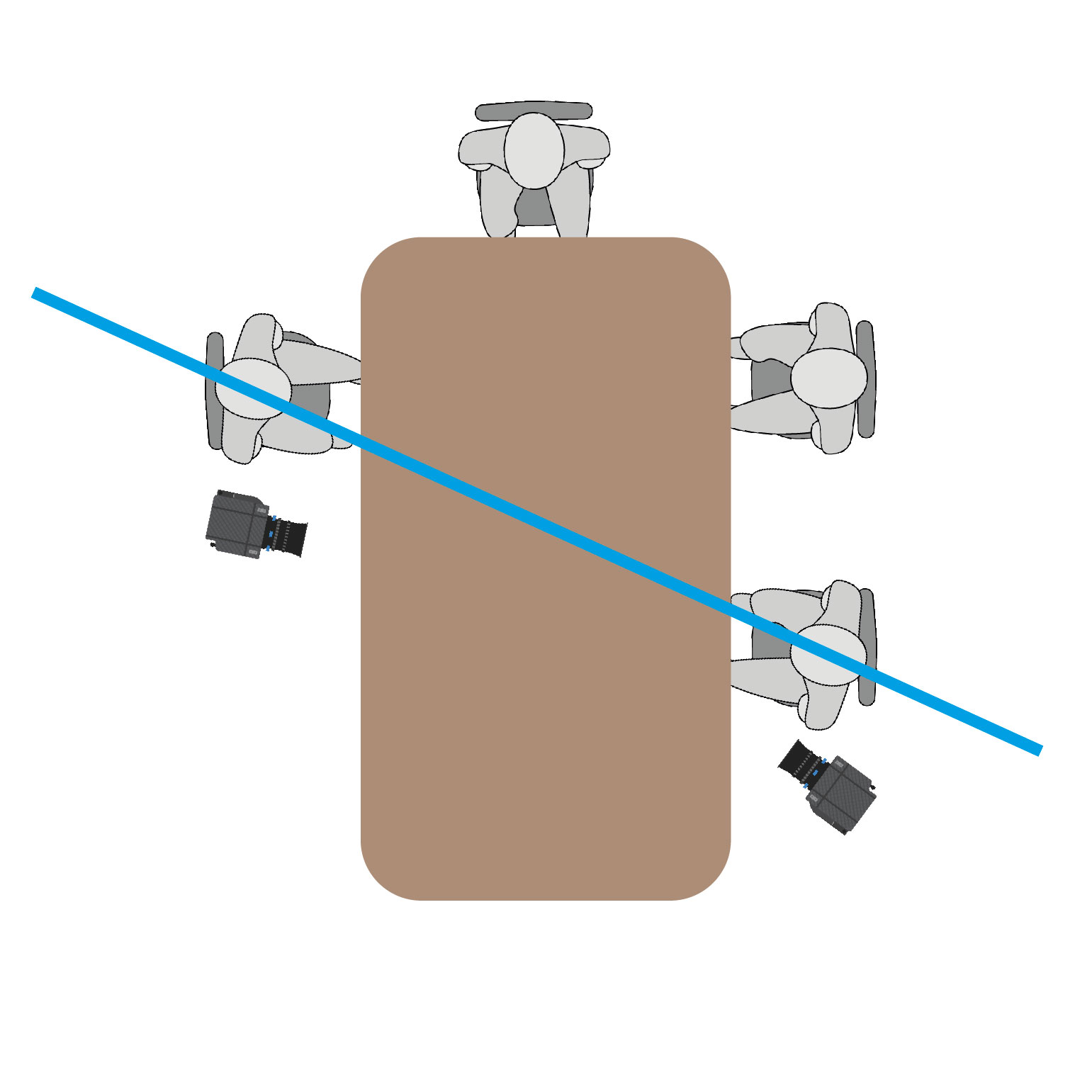
Whenever the man on the far left is talking to the woman on the far right, the imaginary line must be drawn between these two people. As soon as he turns toward the woman sitting to his left and talks to her, a new line is established between them. When close-ups are being shot of the individual persons, the camera must be positioned according to the respective line that exists at the moment where you are planning to cut.

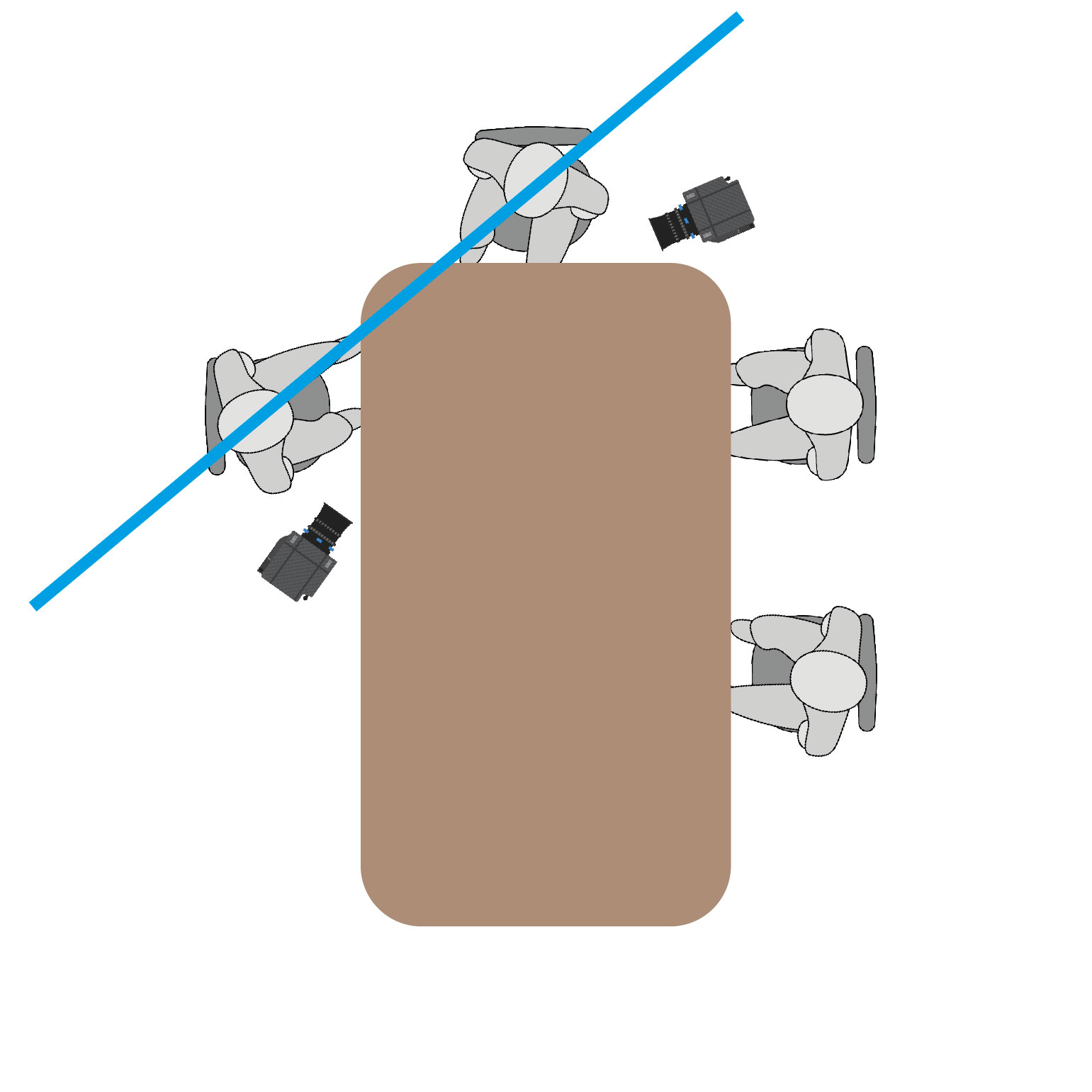
The same goes for any other constellation, for example, a conversation between the couple sitting next to each other, on the other side of the table.

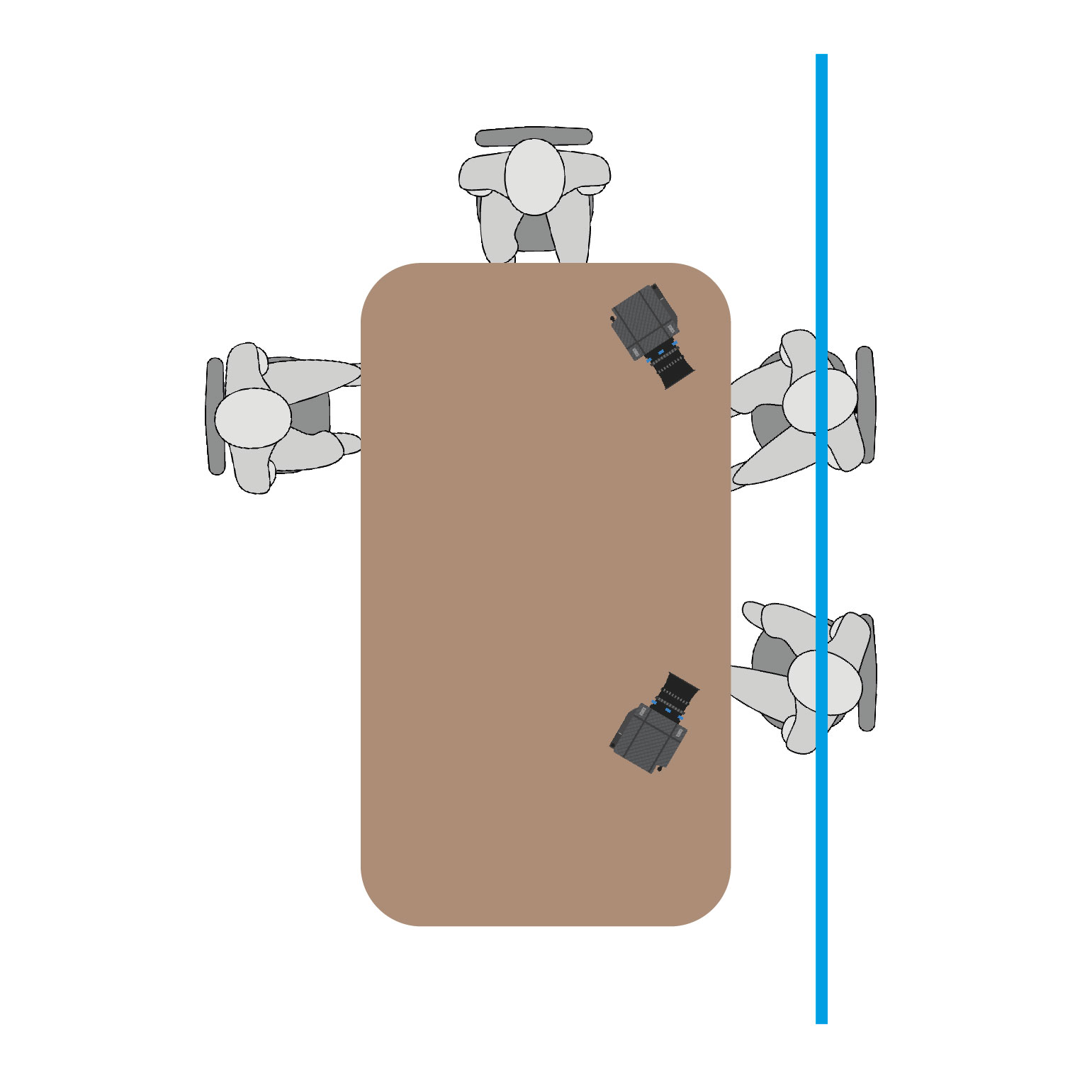
So, as stated before, with every new interaction between two of the four people, a new line is created and must be considered when one is setting up the camera. One character must be looking to the right side of the frame and the other to the left side. Through editing, the audience gets the impression that the characters are looking at each other.
Planning your scenes
Planning and choosing the camera position for each shot is an essential part of the shooting preparations for each scene. Whether it is done days before the shoot or directly on set right before you start shooting the scene, it makes sense to plan the whole scene from beginning to end before you start shooting it.
Using an iPhone to plan your shots
You can use our director’s viewfinder app to plan your shots on your iOS device. Cadrage will let you pre-visualize your shot sequence with accurate framing previews and help you to avoid breaking the 180 degree rule accidentally.
Crossing the line
Chances are, when you shoot longer or more complex scenes, at some point the camera or the actors will need to cross the line. Let’s look at an example to see how this works:
This clip starts with a shot (A) of an undertaker looking over at his apprentice. We then cut to the reverse shot (B) with the apprentice getting ready. So far, simple. However, in the next shot cutting back to the undertaker (A), we see the apprentice crossing the frame. This now shifts the eyeline/line of action in a way such that shots A and B are not on the same side anymore. Cutting between them would no longer be smooth.
That’s why the next reverse shot on the apprentice (C) uses a new camera position to maintain spatial orientation by staying on the correct side of the line. The same goes for the wide shot at the end (D). This shows why it is important to think about editing when you are breaking down a scene and planning your shots to maintain the audience’s orientation throughout the scene.
Breaking the 180 degree rule
You can break the rule by deliberately putting the camera on the other side of the 180 degree line. In some situations, breaking the 180 degree rule can be an artistic decision to visually emphasize an emotional change during a scene.
An example of this is a dialogue scene in which the content of a conversation or the attitude between the subjects changes. This should be thoroughly thought through beforehand to ensure that it has the desired effect once the scene is edited.
Here is an example: In this scene, a short, intimate conversation is taking place between the couple on the far side of the table, while they are sitting across from the other couple.

To heighten that intimate moment visually, the camera was positioned behind the two characters for the close-ups, crossing the line and breaking the 180 degree rule. Thereby, the other persons are seemingly excluded from the conversation.

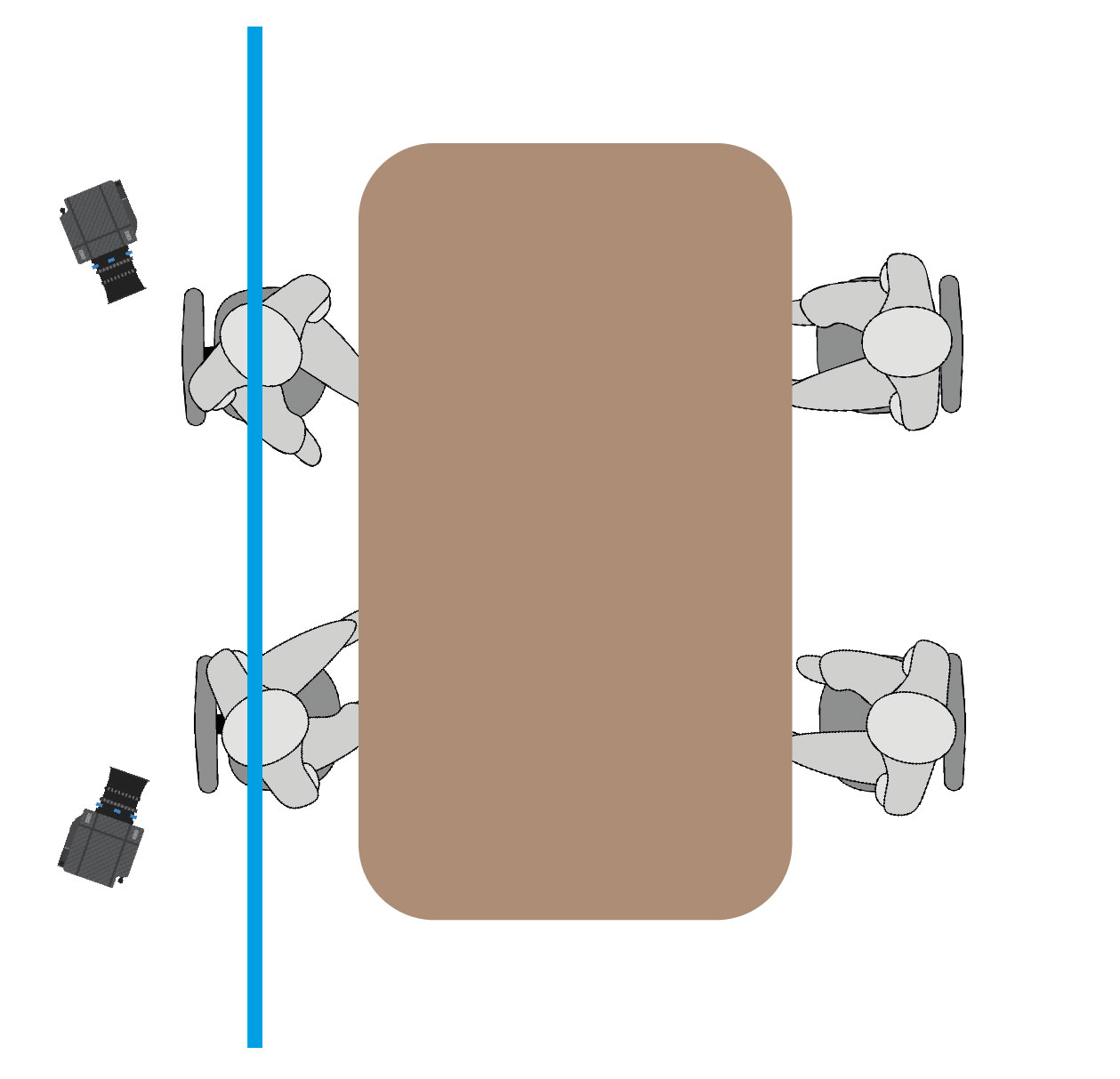
Though the camera is now positioned on the other side of the line, it is not confusing for the audience, as the 180 degree rule is still maintained between the man and the woman and the spatial orientation has been established before.
Conclusion
You have now learned about one of the essential techniques of filmmaking when it comes to breaking down a scene. The best way to internalize the 180 degree rule and become secure in its use is to do it in practice, on paper when planning a scene and on set when shooting it. You will soon realize that there is no reason to be concerned about the 180 degree rule and that it will cease being complex once you have used it consciously a few times.
You can learn a lot more about the use of the 180 degree rule by watching your favorite movies and paying attention to how dialogue scenes are filmed and edited.
FAQ
What happens if you break the 180 degree rule?
When you break the 180 degree rule while shooting, chances are that your characters will not appear to be looking at each other once the scene is edited. That means the audience will lose the spatial orientation of the scene. There are situations in which breaking the 180 degree rule can be a deliberate decision, but they should be thought through well beforehand to avoid problems in the editing process.
What is the eyeline in cinematography?
The eyeline describes the imaginary line between two or more characters who are interacting with each other in a scene. If the characters are shown in separate shots, the eyeline is maintained by respecting the 180 degree rule. Thereby, the characters will seem to be looking at each other once the scene is edited.
What is shot/reverse shot?
Shot/reverse shot is a common method of breaking down, into various shots, a scene in which two or more characters are interacting with each other. The individual characters are filmed in separate shots and their interaction is created through editing.



